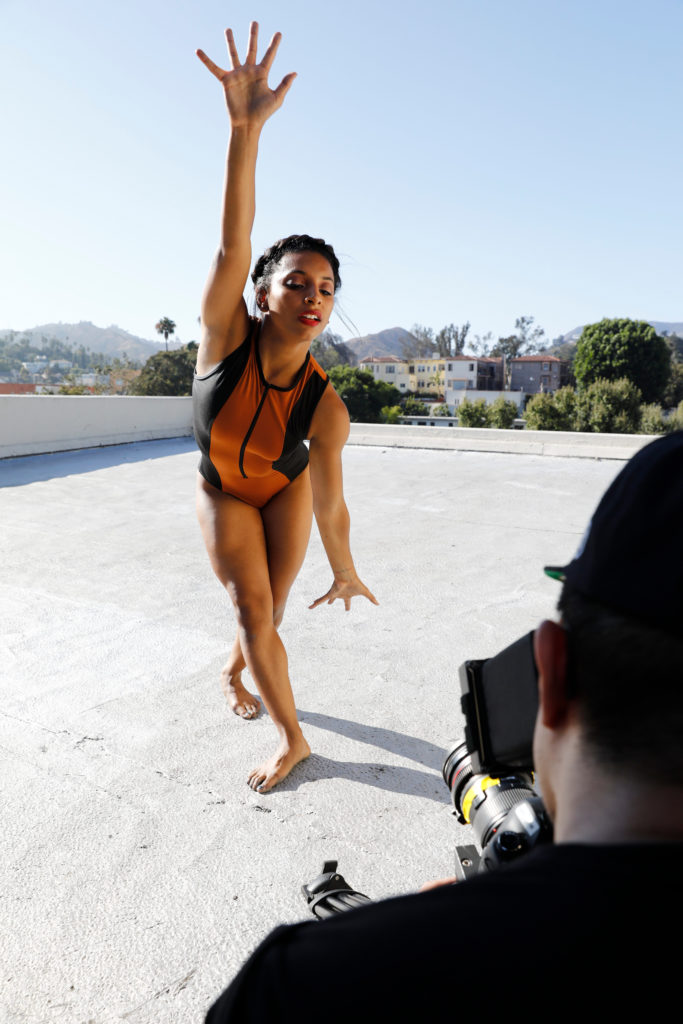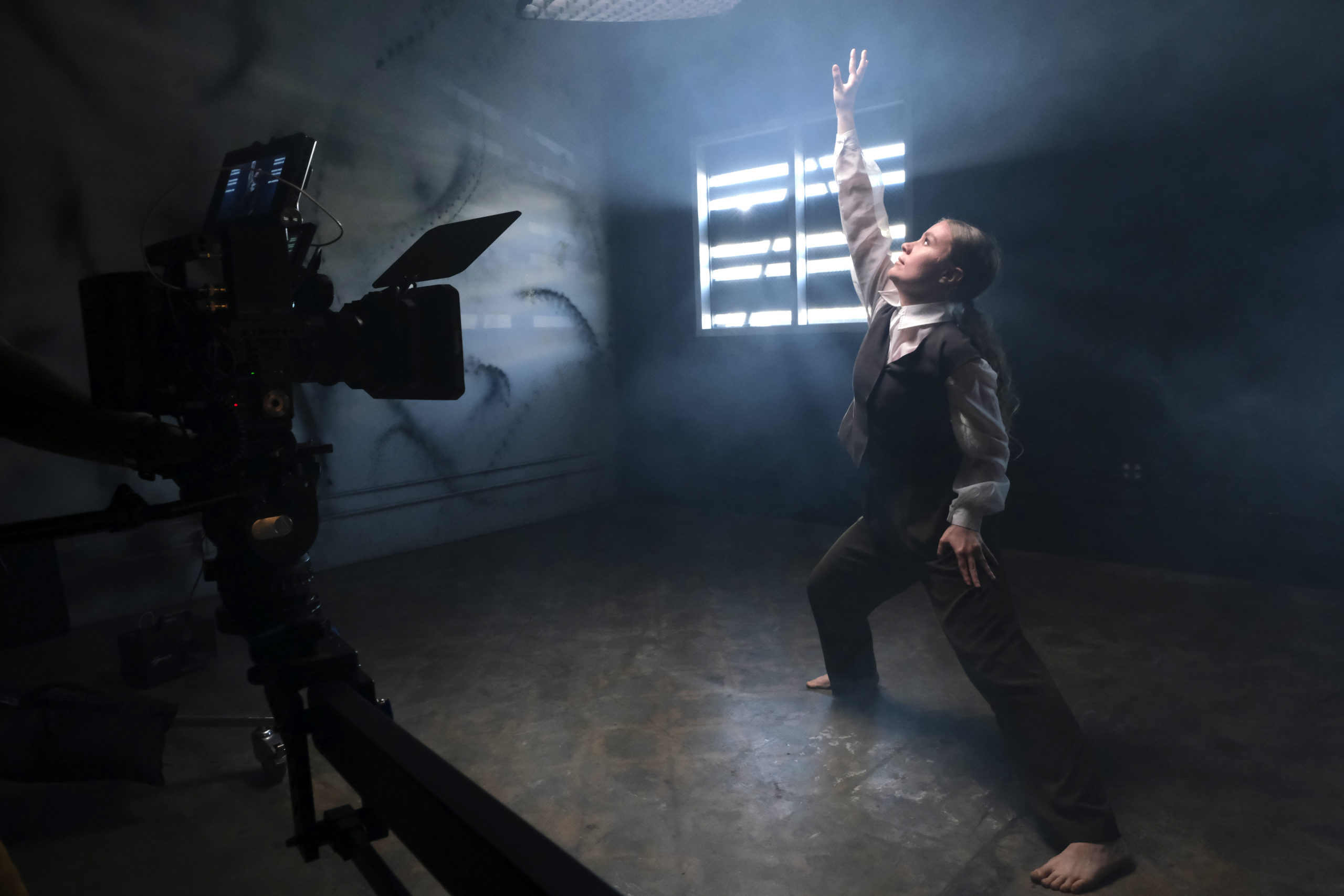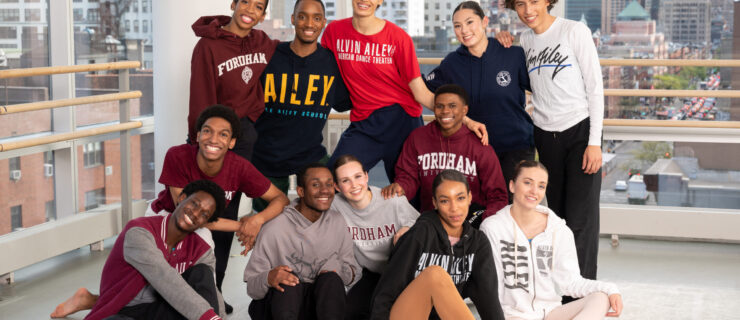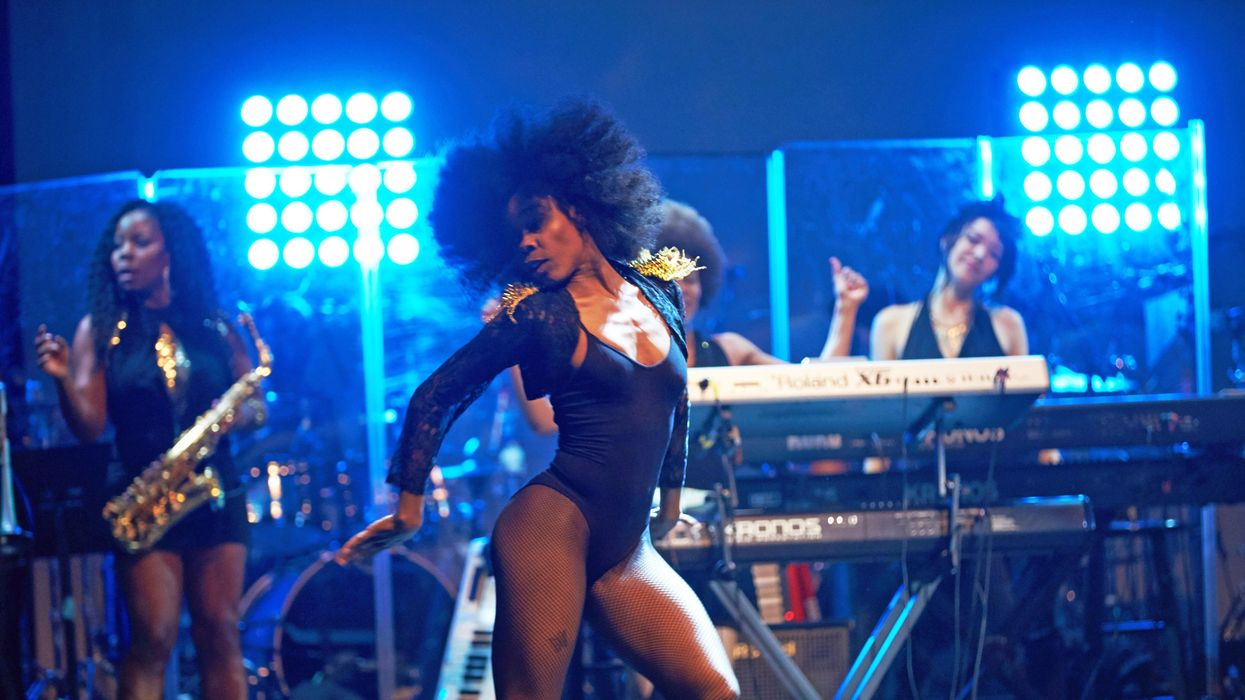Dive Into Dance on Camera Studies at AMDA
Dance on camera is more popular than ever. From iconic performances on hit TV series (“Marvelous Mrs. Maisel” Season 4, anyone?) to short dance trends on TikTok and an explosion of digital work created during the pandemic, it seems like everyone is performing in front of the camera.
With this in mind, today’s dancers need to get comfortable not only in front of the camera but behind it, familiarizing themselves with filming and editing—especially when many auditions nowadays are self-tapes. Whether your goal is to simply learn filming basics or to fully dive into dance filmmaking, students at AMDA, which has campuses in both Los Angeles and New York City, have the opportunity to experiment with these creative tools.
Dance Spirit talked to AMDA L.A. professor and on-camera supervisor Cain DeVore and two recent BFA Dance Theatre grads to learn about the school’s rich dance on camera offerings.
The Shift to Virtual
When the dance industry went completely virtual two years ago, AMDA’s faculty had to slightly adjust its curriculum, working backwards to prepare students for the virtual performances they’d have later in the semester. DeVore led the dancers through a film-school crash course. He explains that, during the first two weeks of adjusting to virtual school, dancers learned how to set up shots, edit on iMovie, and even a few tricks for how to make their phones’ cameras shoot better by locking the exposure and adjusting the frame rate.
DeVore says, “We were way ahead of the curve when it came to figuring this out and inverting our curriculum in a way that both helped teach our students a new skill set, while also not disrupting the through-line of their education.”
Since the pandemic and the school’s integration of more film studies into the dance curriculum, DeVore explains, dance for camera studies have only grown at AMDA due to increased interest from students. “The most incredible result of the pandemic was that so many dancers discovered a new love for filmmaking and for cinema that they didn’t have before,” he says. “What we learned is that we didn’t want to lose all of that [once we were back in person]. The industry is never going to be the same again.”

Finding Passion for Dance on Film at AMDA
For some AMDA students, dance filmmaking is a completely new endeavor. This was the case for fall 2021 BFA Dance Theatre grad Winnie Mu, who’s now working as a freelance dancer and dance photographer and videographer. Before college, she didn’t have any experience in dance filmmaking. “I chose AMDA in the beginning because they offer campuses on both coasts,” she says. “I got an opportunity to experience dance in New York and in L.A., and I’m really thankful that I was able to experience both sides of more theater-based dance and more film-based dance, because then I was able to find my interest in dance on film.”
When the majority of her classes switched to virtual, Mu, like a lot of dance students, wanted to add another skill to her toolbox. Quickly, she fell in love with dance on film. She says, “I wanted to find some extracurriculars that I could do effectively from home, and I saw that there was the Film and Edit Lab led by Cain DeVore. I joined that program, and then I joined it every single semester afterwards because I loved that workshop so much.”
Similar to Mu, class of 2021 BFA Dance Theatre grad Sam Chavez fell in love with dance film during her time at AMDA. After watching her roommate edit dance films, she signed up for DeVore’s lab. Soon after, Chavez found out she had a passion for dance filmmaking.
Postgraduation, Chavez is a dancer with GEOMETRY Dance Company, directed by AMDA faculty member Mackenzie Martin, and a freelance videographer and editor. Most recently, she was back on campus in L.A., shooting behind-the-scenes footage for AMDA’s LAVIRRA dance film production. Reflecting on her time at AMDA, Chavez explains how DeVore “opened up a whole new world for me. The world of dance and film is really cool because you can make things that you aren’t able to do on a stage. It would be impossible to do some of the things that we do on camera.”
The Curriculum
What does studying dance for camera look like at AMDA? In addition to technique classes and other dance-related coursework, dance theater majors can take Kinetic Storytelling for the Camera, where they practice choreographing for the camera, filming and directing dancers, and editing the final project.
For more editing instruction (and lab time), dancers can take the Film and Edit Lab. (Mu and Chavez both signed up for multiple semesters to hone their craft.) DeVore explains that the lab is home to a mix of dance theater, acting and musical theater majors across all editing levels. Students learn video-editing skills and how to create and shoot their own projects in a group setting before showing them in class for feedback. Other courses in creative content development teach dancers related skills, like how to write a pitch or finance creative projects like dance films.

Under the guidance of dance department co-chair Marina Benedict, AMDA provides a supportive environment for students to test out their creative visions. “She has the best instincts about putting artists and faculty together to collaborate with students,” says DeVore.
Chavez describes the Film and Edit Lab as “a really liberating class because, yes, they give you the tools and the basics, but it’s just like dance in the way that with technique you learn all of these rules. But then once you master it, you can actually break all of them and make it your own thing.” She continues, “It’s the same thing with film. There are these set rules that will make you get the best shot and that are correct in the cinema world. But once you break it for a reason, it makes it a whole different story.”
The concept of dancing for the camera is also tied into AMDA’s technique classes. “Sometimes in class, we’d take the opportunity to film and practice what dancing in front of a camera would feel like,” says Mu. “I had a commercial jazz class where we specifically performed as if every class was like a [professional] rehearsal, so we would have staging, quick changes of choreography.”
Opportunities During School and Postgrad
Not only do AMDA L.A. dancers get hands-on experience via film classes, but they also get opportunities in front of the camera. Students can audition to perform in dance films—and receive credit for it. Because of this, AMDA students graduate with an understanding of set etiquette. “You get to work with real professionals on these major sets,” says Chavez. “You get to ask, ‘Hey, what does that mean?’ You’re learning a lot too, in real-time.”

The increased emphasis on digital content has already had career benefits for students, says DeVore. “I have noticed that since we’ve been remote and the dancers are creating all this self-generated content and representing themselves better visually, I think that they’re showing off who they are and their dancing better.” He continues, “It seems to be helping more of them land agencies,” including Chavez, who recently signed with Go2Talent Agency.
As a result of the surge of interest in dance film studies, this fall, AMDA L.A. is introducing a new BFA program: Performing Arts (Dance Theatre & Creative Content Development). The new degree melds the existing BFA Dance Theatre program with a concentration focused on dance on camera. For more information on the degree, as well as admissions requirements, visit AMDA’s website.




